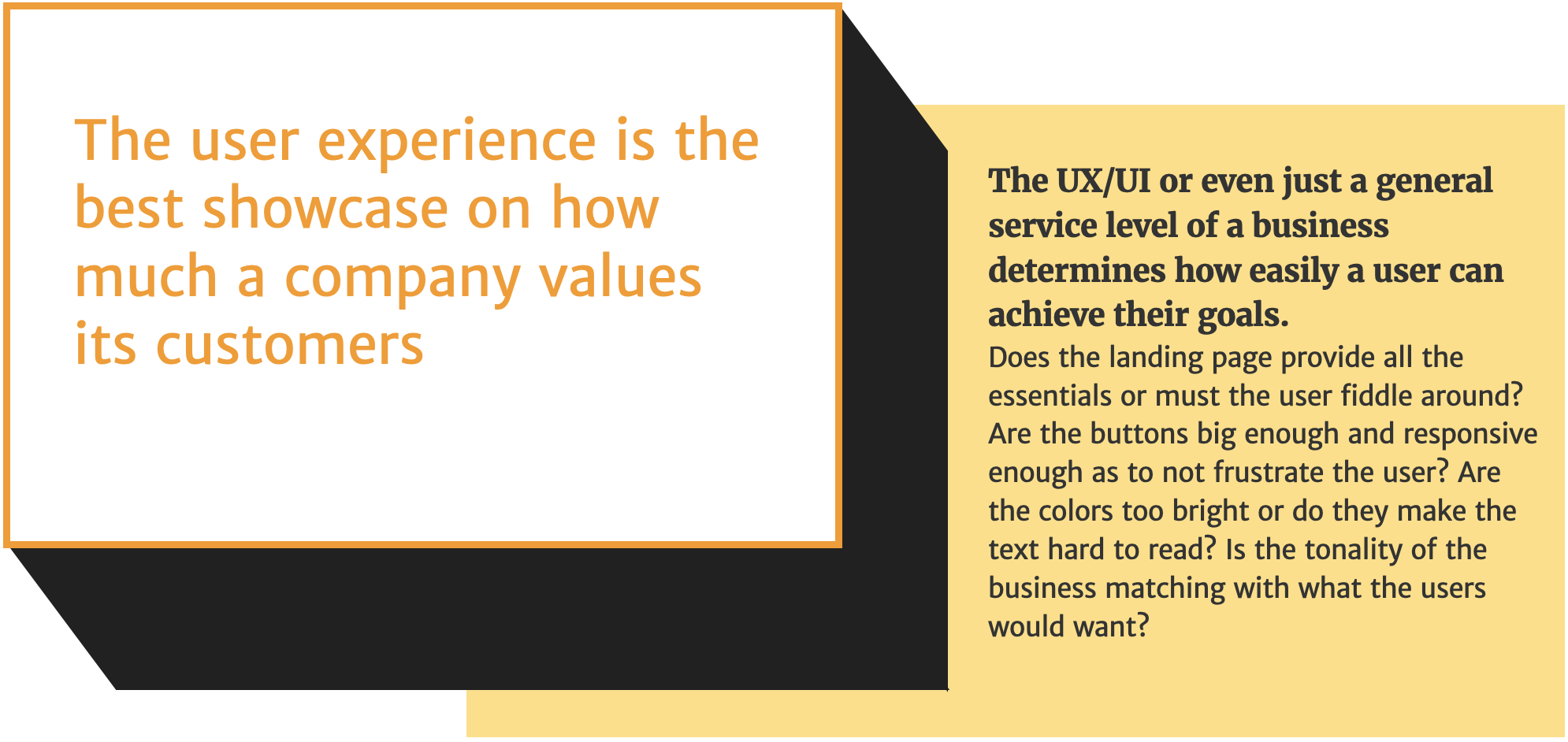What the hospitality industry tells us about C/DXE
Author: Jialin Wu
When thinking about customer experience excellence, many people will consider luxury hotels as the primary example. Hospitality was one of the first industries to really focus on customer service. Customer obsession and customer service are not revolutionary business concepts or strategies for the hospitality world, but rather its bread and butter. In the context of hotels, that kind of customer-focus came naturally, as the aim of hotels is to provide a home away from home for travellers. Today, one can observe that such a customer-centered mindset also pays off in many other industries. This is particularly highlighted by Apple’s success with their retail strategy.
When Steve Jobs decided that it was time to create their own store, he adhered to Apple’s famous tagline “think different”. In order to get inspiration and ideas, Jobs asked people around him and his employees about their best customer service experience. He consistently got answers about great customer service people got from luxury hotels like the Four Seasons and Ritz Carlton. This is when Jobs decided to model the retail experience of the Apple store after luxury hotels.If you have ever walked into an Apple store, you know that the experience revolves around the customer and feels quite different compared to a traditional retail store. It is no coincidence that a hospitality inspired retail strategy revolves around the customer, as from day one the hotel experience is designed with the customer experience in mind.
In order to understand how luxury hotels can deliver the kind of customer service that truly marks the standard of excellence, it is important to understand how a hotel is created from the initial stages. Each stage demonstrates the industry’s customer-centered mindset and dedication, which have been meticulously honed and updated over decades.
Over the years, hotel concepts have evolved in line with ever-changing customer needs. Travellers’ needs and wants are becoming increasingly diverse, and this is why major hotel chains employ a multitude of different brand concepts. Each hotel concept should be tailored to a specific customer segment by understanding not only the target market and general customer demographics, but also how customer behave, interact, and feel. A solid concept based on well-researched and understood customer desires and behaviours sets a strong foundation to build upon. This foundation is the first stage of developing a luxury hotel.
The blueprint of the hotel, which considers both the existing infrastructure of the building and the hotel’s operational needs, is developed in the second is stage. In order to gain a better understanding of guest behavior and operational needs, a hotel architect should work quite closely with operational experts. This means, for example, that the architect needs to make sure that the housekeeping ladies don’t have to run across floors to get clean sheets to clean the rooms, there’s enough space in the kitchen to prevent accidents during rush hour, and restaurant guests have access to the hotel bathroom at a reasonable distance. A hotel architect can truly uncover and account for such details only in collaboration with someone who has first-hand experience with both guests and operations. Therefore, collaboration with an operational expert is key. When it comes to businesses designing the IT infrastructure or data architecture, how often are the different departments that eventually use it consulted? How often do internal departments that create services for other departments truly understand the needs and intricate behavioural details of end users? The blueprint of a hotel determines its long-run operational efficiency because it’s not something that the hotel can easily change in the future. The same is true for many other businesses when it comes to establishing their IT infrastructure or data architecture: It is paramount to create it around those who will use it. Unfortunately, many companies have created legacy IT systems that do not stand the test of time and have become cumbersome and restrictive for their users instead of empowering them to better serve the end-customer.
The next stage in hotel development is the design. Design isn’t only about how to aesthetically fill the hotel and match the initial concept, but it also has a lot to do with making sure that functional needs are met as well. In order for the design to be functional, customer behaviour, needs, and desires need to be understood. A truly functional design facilitates the relationship between customers and the hotel staff, and accounts for needs on both sides. Think, for example, about the process of choosing a counter that serves as a pass between the kitchen and the customer at an open kitchen restaurant concept. In this concept, customers should be able to get their freshly made dishes directly from the chef. Initially, the designer chose a beautiful marble counter, but when it was evaluated for its purpose it wasn’t chosen. Why? Because the counter was too wide, so that the chef could not hand the dish to the guest, but rather had to slide the dish over, risking both spillage and losing intimacy. Another example concerns the choice of dining chairs: Dining chairs should be ergonomically comfortable for the customer, aesthetically fitting to the concept, and easy to lift so that at closing they can be put away for ease of cleaning. These criteria seem easy to meet, but when accounting for the hundreds of different design decisions that need to be made to fill a hotel, the choice of dining chairs becomes a much more complicated task. This is why creating a cohesive design is extremely hard. It might be easy to select a single chair that fits all the criteria, but selecting a table that fits the chair, the rug, the wallpaper, and is the right size is a much harder task.
Just like the previous stages, a good design isn’t only about selecting the right aesthetics to fit the concept, but it should also enable operational efficiency and guest comfort. Similarly, when it comes to user experience/user interface design, it is not enough to build a single page that has a great experience and look. If you create an amazing support page, but the page is hard to find, it would then defeat its own purpose. Or, for instance, you create an amazing landing page with high conversion rates, but when it comes to customers managing their accounts the experience is cumbersome. This disconnect between the initial experience and design with the rest of the experience would create churn and customer dissatisfaction. Therefore, a cohesive design that considers the entire customer journey across different contexts is key. (Pan, 2020)
The last stage, which is the service delivery stage, is where the moment of truth comes into play. The success of this stage strongly depends on the previous stages. It might be easy to deliver excellent service to one customer, but delivering the same standard of service to all customers who walk into a hotel every day requires a strong foundation covered in the previous stages. Take, for example, the 5-minute water rule, which is a standard of many luxury hotels. According to this standard water needs to be served to guests within 5 minutes of them sitting down at the table. In order to make that happen consistently hundreds of times a day, the architect has to plan enough space for the dishwasher to wash the glasses. Moreover, the designer has to choose a shelf or cabinet that can hold enough glasses. And finally, the service staff has space for preparing mise en place and someone made the correct purchase order the day before. The point is that each stage supports the next one and, therefore, a strong customer focus from the get-go is needed to create these elements that seamlessly enable service at each customer touchpoint.
However, even with a strong foundation, that’s still only half of the battle. We have covered the physical aspect of what makes a hotel work, but we haven’t covered the most important element of how hotels deliver customer experience excellence. The employees of a hotel are arguably its most important asset. They are the last and most crucial key, since they represent the hotel in their interactions with guests. One may think that luxury hotel employees are selected based on their expertise and know how, but that is actually secondary. A Four Seasons would not hire the best bartender in the world if the said bartender did not fit the hotel’s values and culture. The golden rule that each Four Seasons employee is expected to embody is simple: We treat others the same way we would want to be treated. (Four Seasons , n.d.)It’s a mentality that requires a lot of empathy, which is not easy to teach. Therefore, a brand like Four Seasons usually hires according to culture fit because the rest can be taught. Moreover, this mentality isn’t only true for operational staff; non-customer facing employees across the organisation are also expected to have the same cultural fit. This ensures that those who make decisions that affect others and especially employees who are guest facing, do so with empathy. It again goes back to the very simple rule that if you treat people well, the way you would like to be treated, they will do the same. If employees are treated with respect and their well-being in mind, they will do the same for the guests. When guests are treated with respect and sincerity, they will treat the business well. It’s quite logical. Unhappy, resentful, and fed up employees simply won’t be able to deliver thoughtful, warm, and sincere service to customers. This simple yet often forgotten rule seems to be gaining a comeback in the business world in the form of tech companies. Google, Facebook, Tesla, Tencent, Alibaba, and many other tech companies worldwide boast an impressive track record not only in their business accomplishments, but also in their employee benefits and services. However, it’s not enough to offer your employees the right benefit: It is imperative to find employees who fit the culture and share the same values with the company. No matter how well you treat someone who has no service mindset, this person will never be able to provide warmth and care to the guests.






